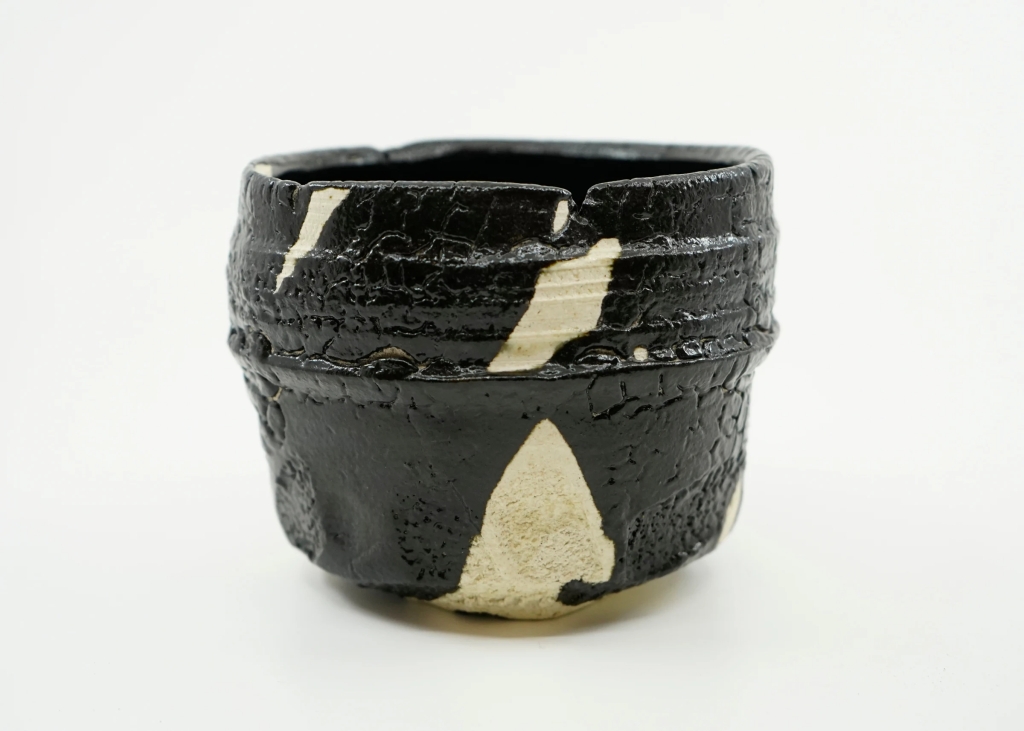Recently in introducing at research project to my beginning hand building students I stumbled across a makers work whom I was unfamiliar with but whose work grabbed my eye and my interest. While perusing the collection of the Victoria & Albert Museum I found a teabowl of his made of a white clay and decorated with red glaze. The teabowl had been fired upside down so the juicy red glaze drips made their way up towards and beyond the lip of the piece. The soft undulating profile of the teabowl while slightly boxy retained a organic earthiness and was counterpointed with precisely crude incisions which rhythmically danced around and sectioned off the surface of the exterior of the bowl. These incisions and punctuations were softened by the thick luscious red gloopy glaze applied to the upper half of the piece but played a prominent role in balancing the lower half of the piece giving detail which holds its own against the bright red glaze.

Yamada Kazu was born in 1954 and makes a variety of different styles of Japanese pottery. He is known for modernized flamboyant twists on traditional styles. His Shino wares are juicy and fluid with rich warm reddish browns or bold with strong white Shinos and bold iron decorations. Beyond Shino and Oribe wares he makes warm yellow to green Seto pots as well which have delicate surface decoration that still keeps in theme with his other works. Kazu was born into a ceramic family. His father Yamada Kenkichi, was a highly respected ceramic artist as well whom received many awards and accolades and his uncle, Yamada Jōzan, was a designated a living national treasure of Japan in 1998. Under the tutalage of Suzuki Osamu at Osaka University of the Arts and later mentor Katō Tokuro, Kazu developed a voice and interest in reinterpreting the tea wares of the Momoyama period with a modernized take. In 1976 he moved to Echizen Pottery Village and set up his first kiln where he began production of his wares. His work has been collected by many notable collections and museums and covers a wide breadth of styles all of which build on traditional forms and styles while moving forward with new twists and explorations of form, glaze, marks and inspirations.












images from Stratford Gallery , Dai Ichi Arts, Robert Yellin Gallery, Gallery Kurimoto